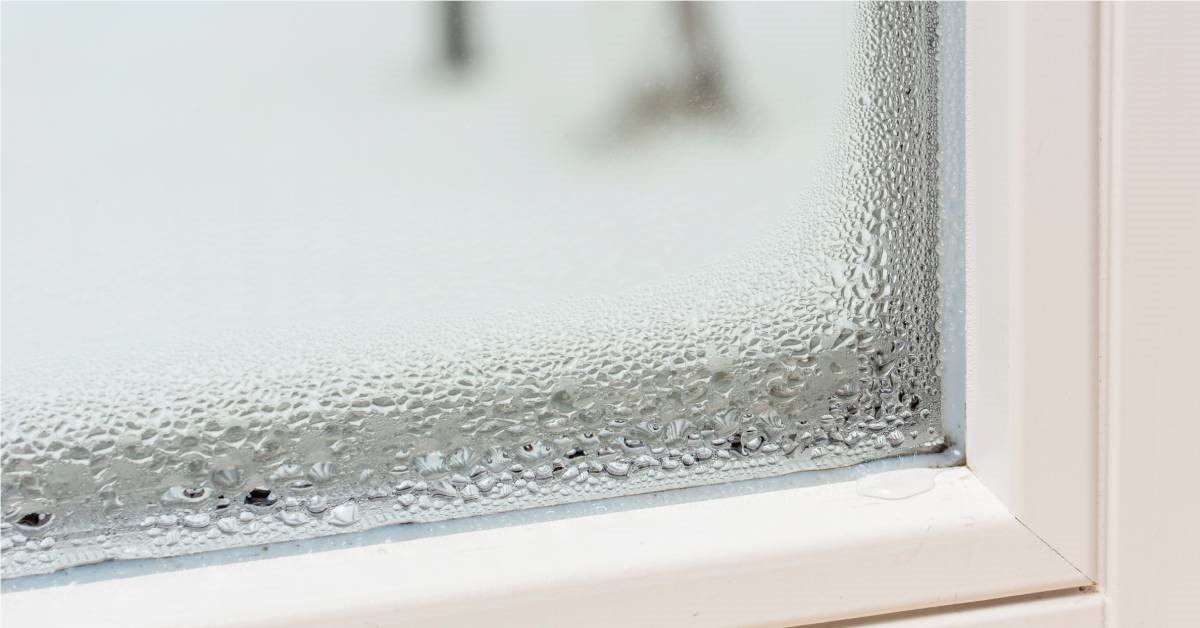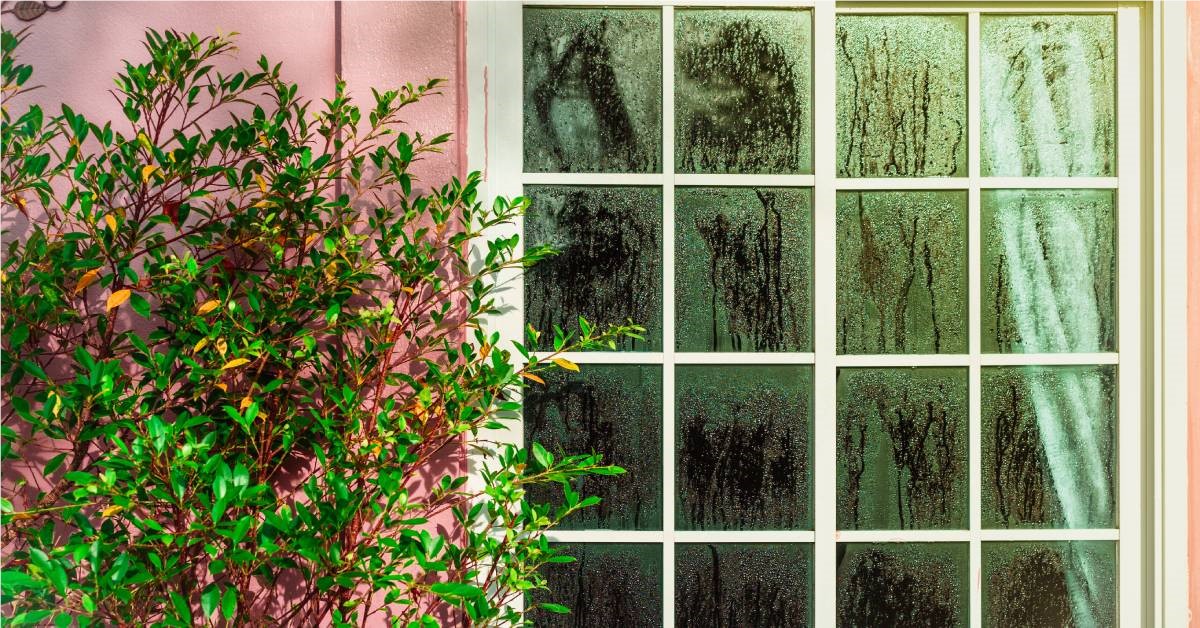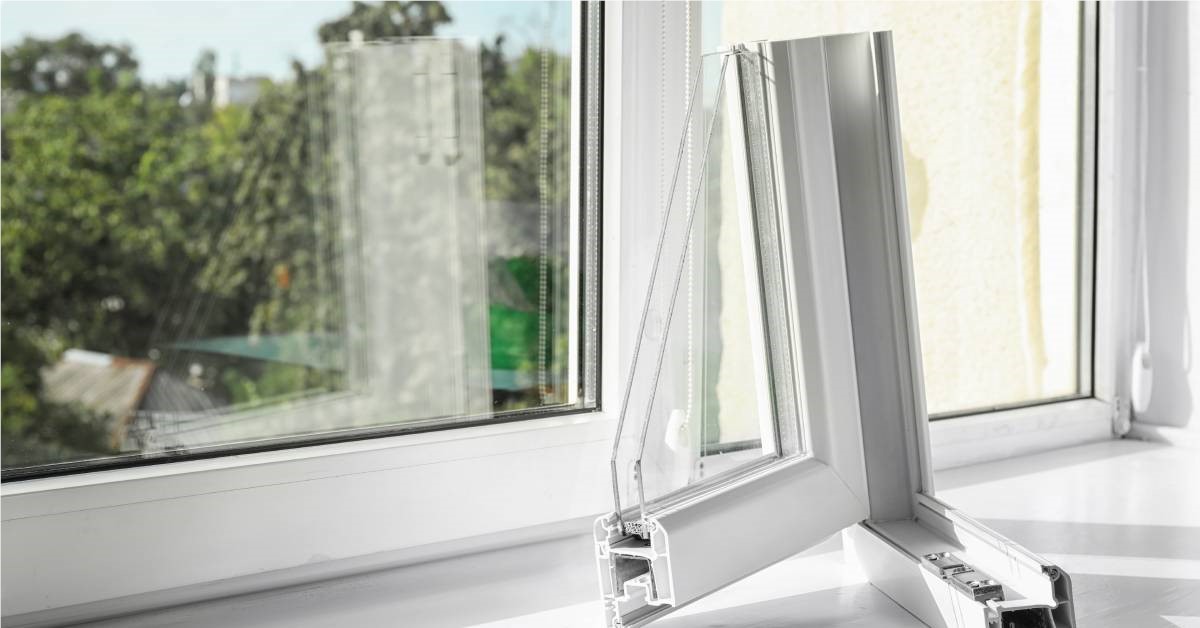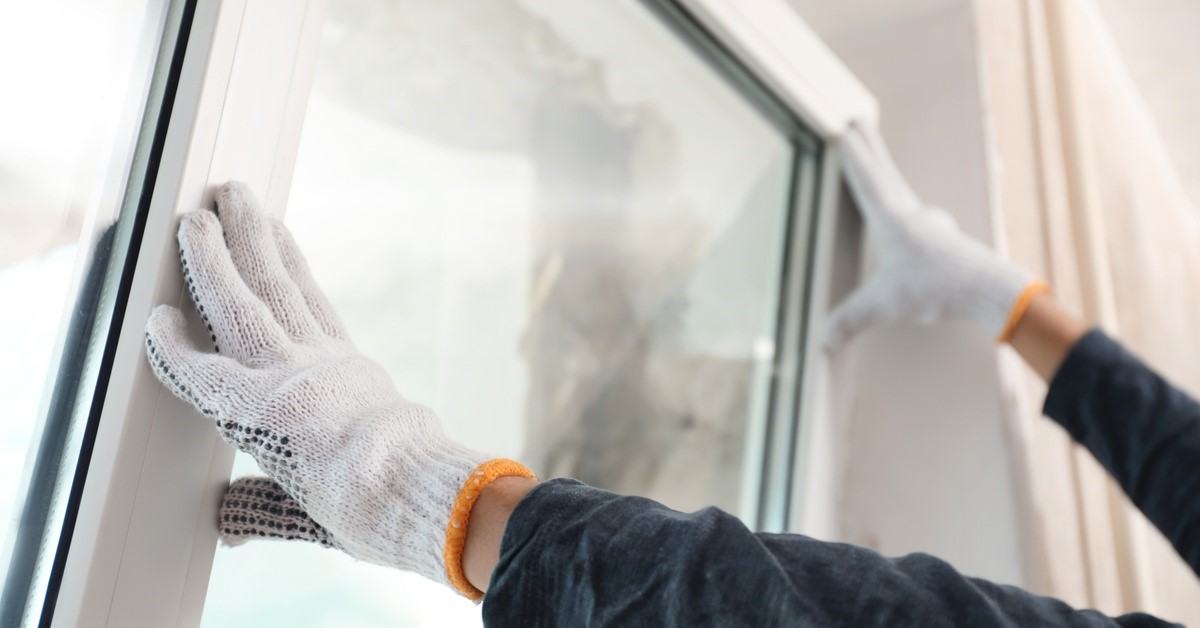
Living in Winston-Salem, North Carolina, presents homeowners with unique challenges and experiences, especially when it comes to maintaining the integrity and comfort of their homes. One such challenge is window condensation, a common yet often misunderstood occurrence. Learn about window condensation and its consequences, causes, and solutions for your home.
What Is Window Condensation?
Window condensation forms when warm, moist air meets the surface of a cool glass window, causing water vapor in the air to condense into liquid. You may see it inside your home when the interior temperature is warmer than the outside air in the fall and winter, and on the outside of your windows when you have the AC running on a hot, humid summer day.
If you’ve lived through a steamy summer in Winston-Salem or the surrounding area, you’re likely no stranger to condensation on your windows. But you may also see it in the winter, when you crank up the heat to stave off the January chill. Either way, understanding the potential consequences of unchecked window condensation is important. This includes knowing how to prevent condensation in the first place and what to do about it if you notice water droplets accumulating on your windows.
Is Window Condensation Harmful?
While occasional condensation isn't a cause for alarm, persistent moisture can lead to problems. In Winston-Salem, where humidity levels fluctuate throughout the year, unchecked condensation can cause wood rot, mold, and mildew growth, impacting your home's indoor air quality. In severe cases, condensation can even compromise your home’s structural integrity.
What Causes Window Condensation
The primary culprit behind window condensation is the disparity between indoor and outdoor temperatures partnered with high humidity levels in the outside air, inside the home, or both. Cooking, showering, and cleaning with tools that use water, such as a steam mop, contribute to indoor humidity, which then condenses on cool glass window surfaces.
Types of Window Condensation
Window condensation can occur in three different areas of your windows. Each type of condensation presents its own challenges, and requires a separate solution:

Exterior Condensation: This occurs on the outside of the window, typically during summer mornings when the air outside is warmer than the window surface. This type of condensation is common in Winston-Salem due to the warm, humid climate.
Condensation Between Panes: Found in double or triple-paned windows, condensation between panes indicates a seal failure, allowing moisture to infiltrate the space between the glass panes. Ordinarily, that space is filled with an insulating gas. If the seals are compromised, humid air can enter and cause condensation between the panes.
Interior Condensation: This is the most common type of window condensation, forming on the inside surface of the window. It's prevalent during colder months when the indoor air is much warmer than the air outside and homeowners are less likely to open their windows to allow outside air into the home.
How to Prevent Interior Window Condensation
Here are some effective tips to prevent interior window condensation:
- Open Windows and Drapes: Open windows can create greater equilibrium between outdoor and indoor climate conditions, making condensation less likely. Natural air flow can reduce indoor moisture levels and aid evaporation.
- Use a Dehumidifier: Especially during humid months, a dehumidifier can help maintain optimal indoor humidity levels.
- Remove Plants from Windowsills: Plants release moisture into the air; keep them away from windows to minimize condensation.
- Use Exhaust Fans: Run exhaust fans in kitchens and bathrooms during and after cooking or showering to expel excess moisture.
- Encourage Interior Air Circulation: Keeping interior doors open between rooms and using ceiling fans to distribute air evenly throughout your home can help reduce condensation on your windows.
- Kitty Litter Sock: Cat litter absorbs moisture, so try filling a sock with kitty litter and placing it in front of the window.
- Bowl of Salt on the Windowsill: Another simple moisture absorber some believe is effective is placing a bowl of salt on the windowsill of windows that are prone to condensation.
If you notice condensation on the inside of your windows despite these measures, use a very absorbent old towel regularly to wipe off the water. Allowing condensation to accumulate on your windows can cause mold and mildew, and even rot on the mullions and windowsills.
What to Do About Exterior Condensation
Exterior condensation on your windows is mostly an annoyance, blocking your clear view out of your windows before it evaporates when the sun comes out. It can, however, cause damage in the same way interior condensation can affect your window mullions and frames, so it’s a good idea to try to minimize it:
- Trim Vegetation: Minimize shade on the windows by trimming trees and shrubs to allow for more sunlight, warming up the glass surface.
- Increase Interior Temperature: Slightly increasing your home’s temperature can help reduce temperature differentials.
- Use a Water Repellant: Products designed for automotive use can work wonders on exterior window surfaces by allowing water to bead and disperse more easily.
Mitigating Condensation Between Panes
Unfortunately, once condensation occurs between window panes, it's an indicator of seal failure, and more elaborate measures are necessary:
- Replace Seals and Individual Panes: In some cases, you can replace the seals or the faulty pane yourself, without needing to replace the entire window. If you’re not confident about taking on that project, a window professional can do it for you.
- Replace Windows: Sometimes, the most effective solution is to install new windows. Modern windows come with improved insulation properties and seals, offering a long-term solution to condensation issues.

If you’re in need of replacement windows in Winston-Salem, contact Reece Builders. We’re a family owned company that has been serving the area for over 50 years.
Understanding the causes of and solutions for window condensation in your home is essential for maintaining a comfortable and healthy living environment. By identifying the type of condensation you're dealing with and applying targeted strategies, you can protect your home from potential damage and enjoy clearer views all year round.
Whether it's adopting simple lifestyle changes to reduce interior humidity or considering upgrades to your home's windows, every step is a move towards a more comfortable, efficient, and healthy home. Remember, tackling window condensation not only improves your immediate living conditions but also contributes to the longevity and value of your home in the vibrant community of Winston-Salem, North Carolina.
Subscribe to Reece Builders's Blog







Comments